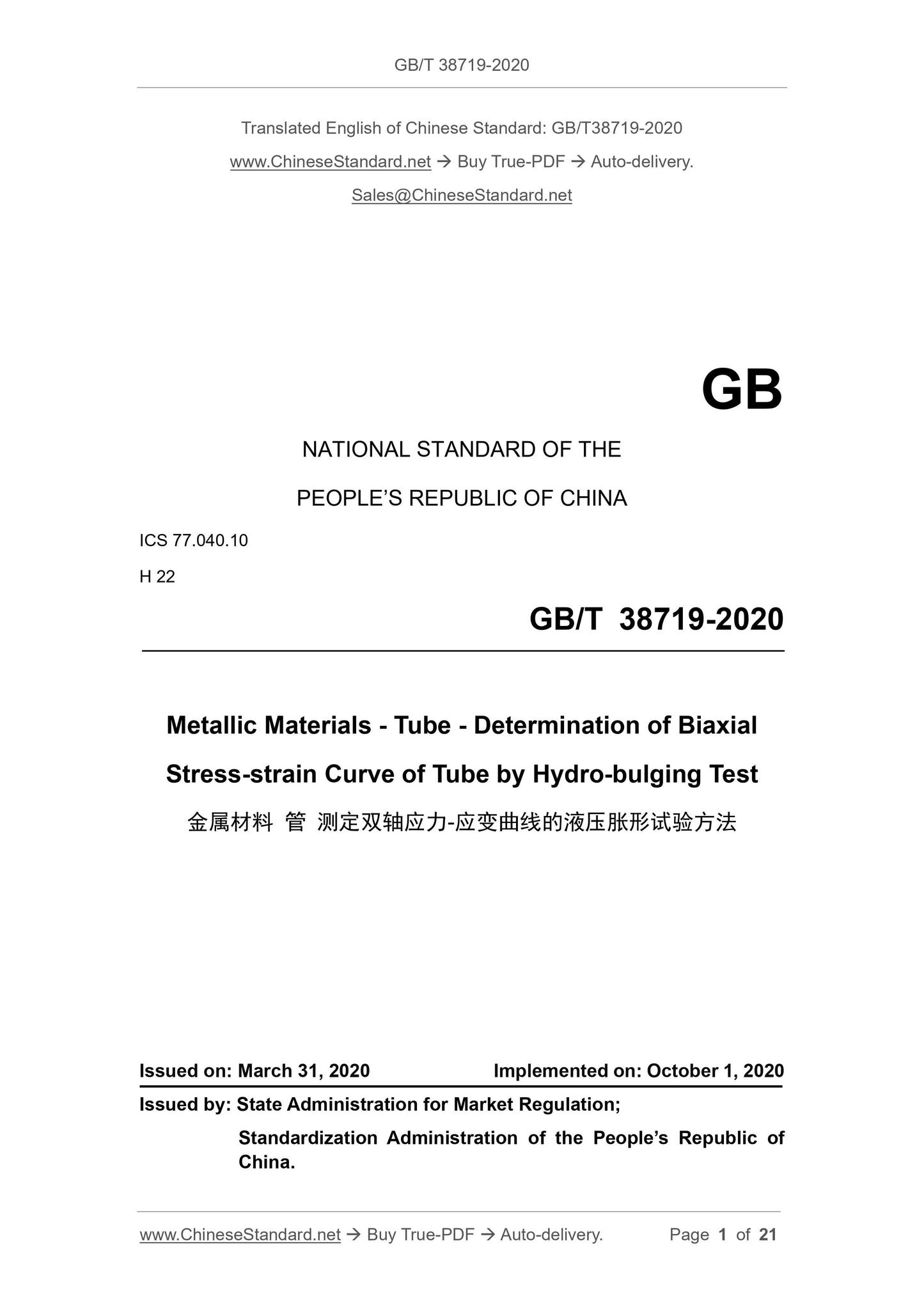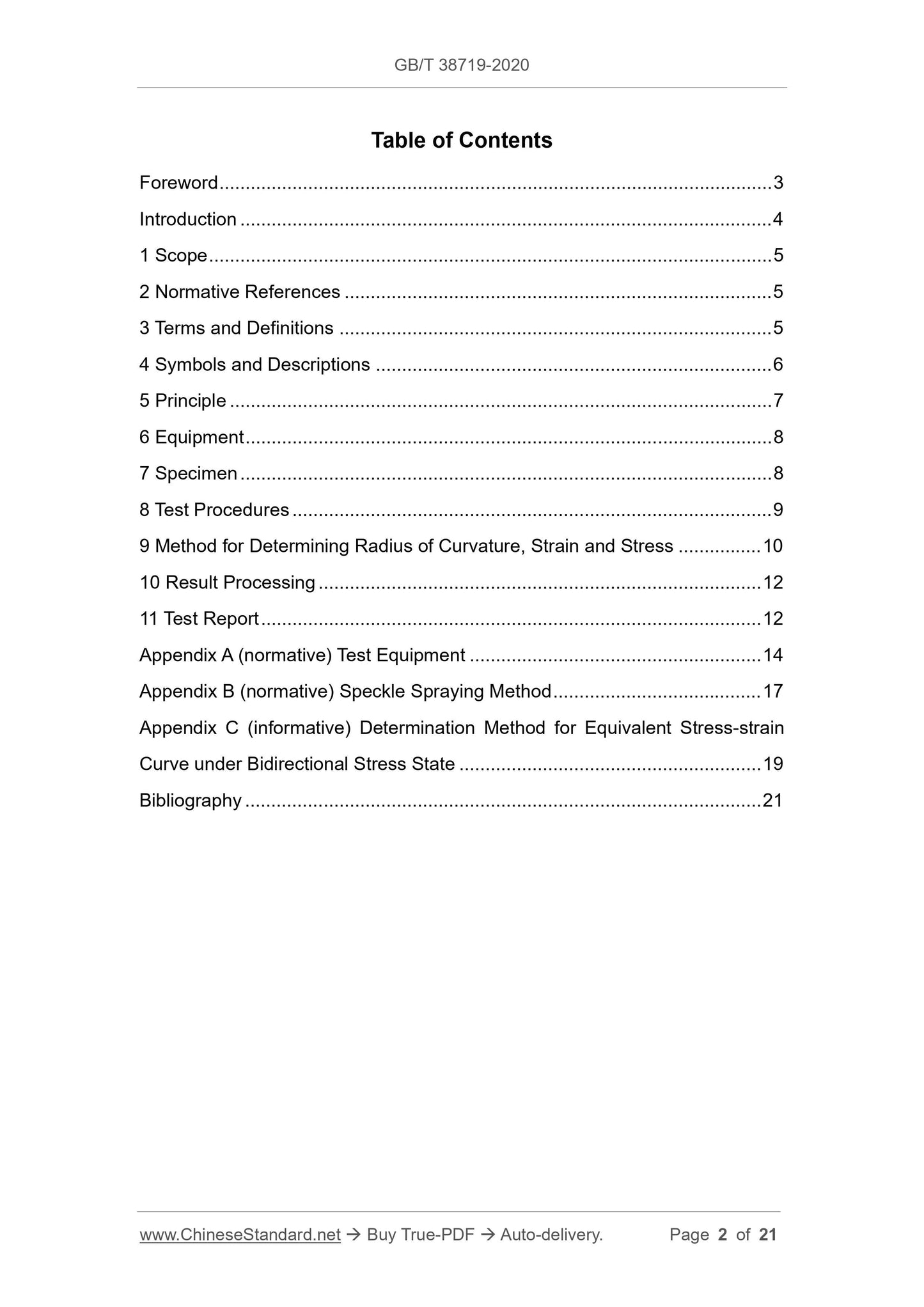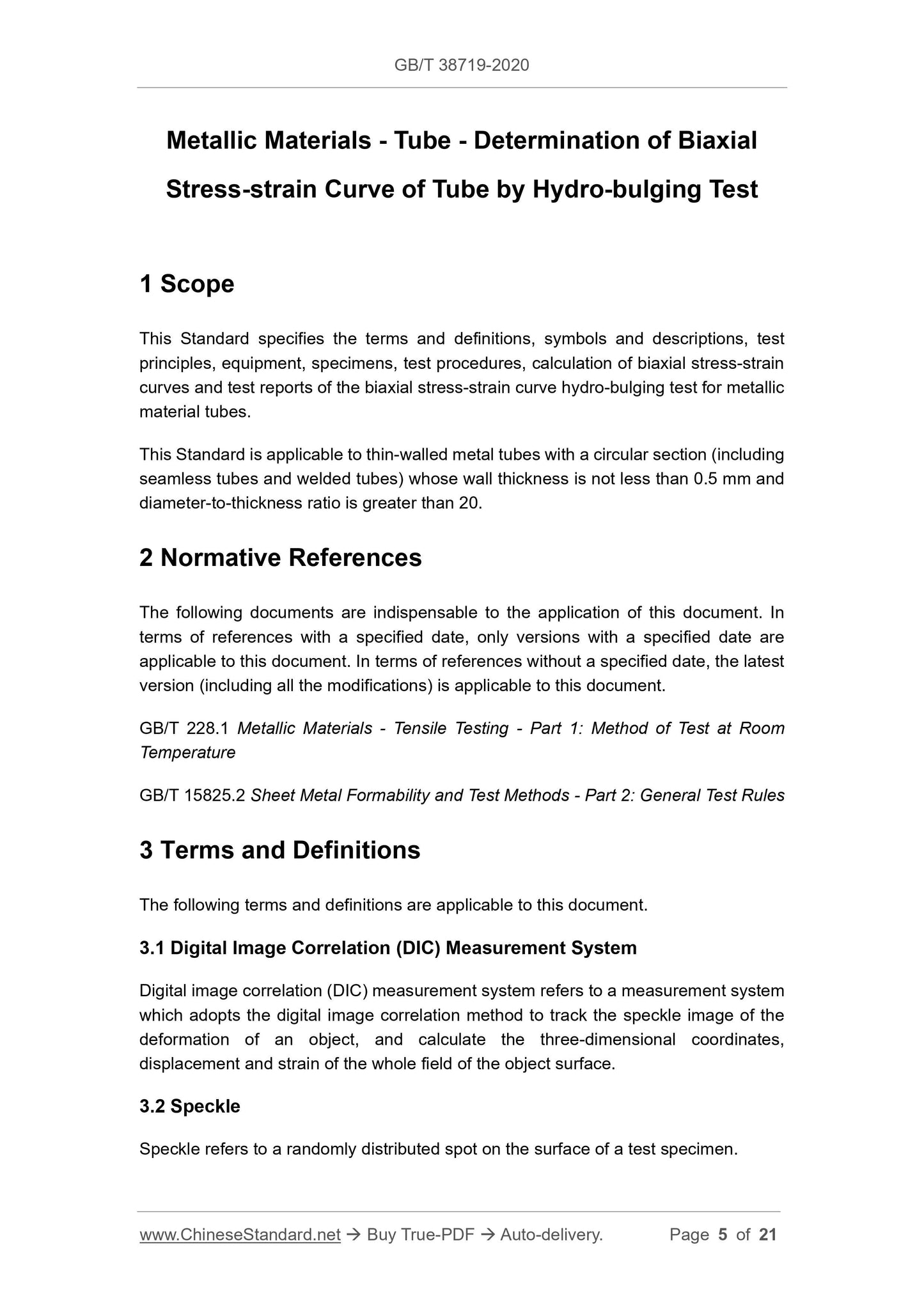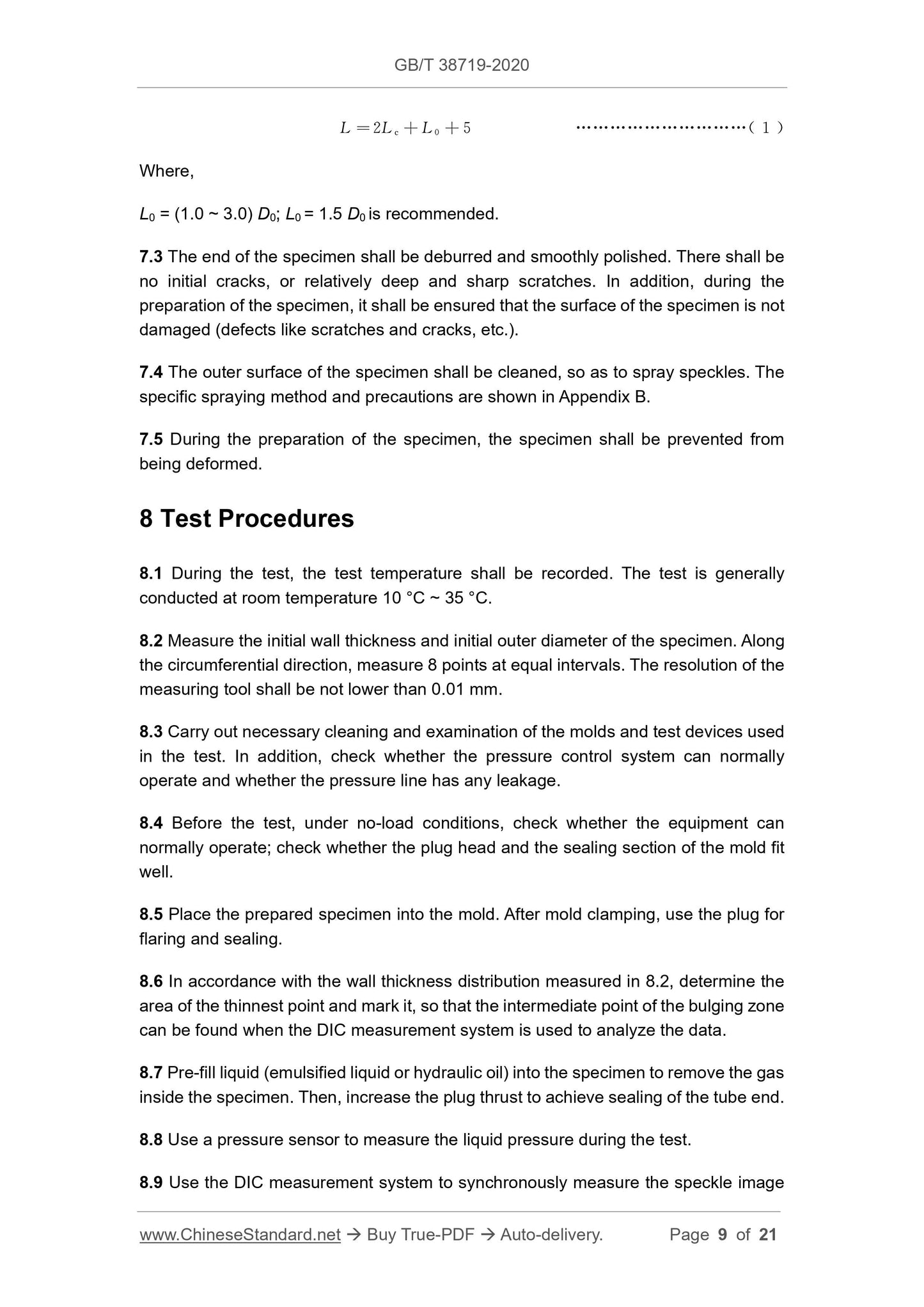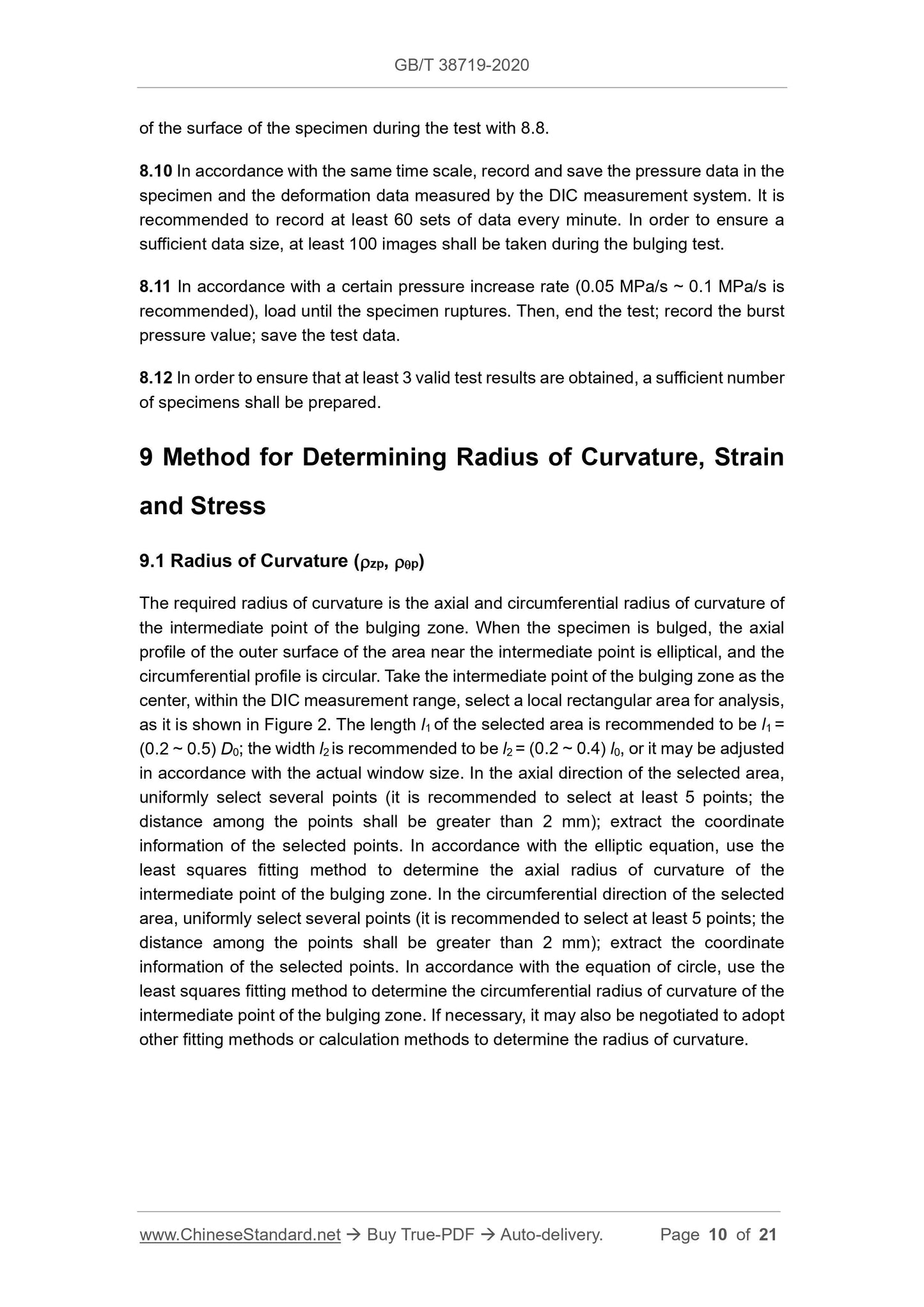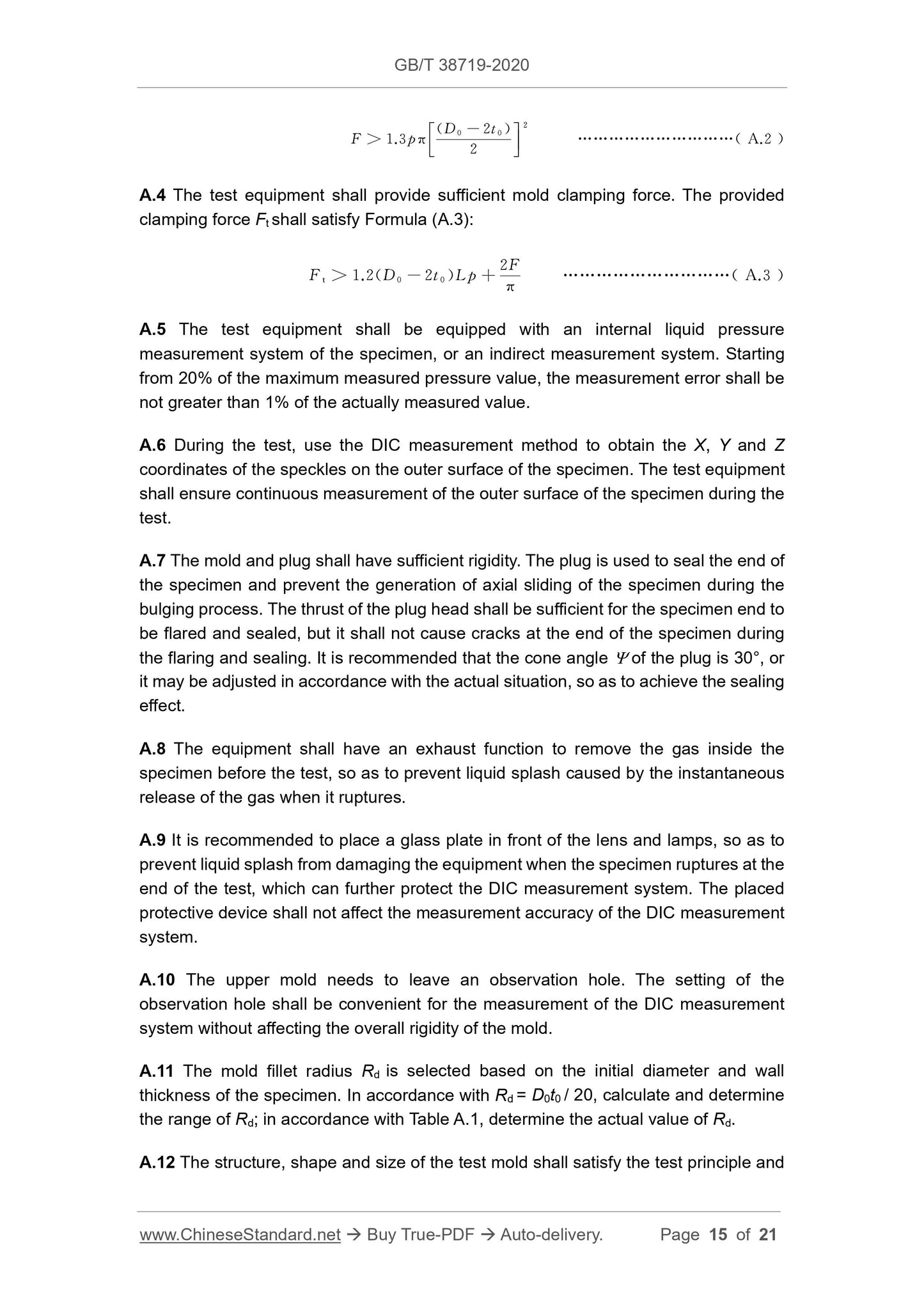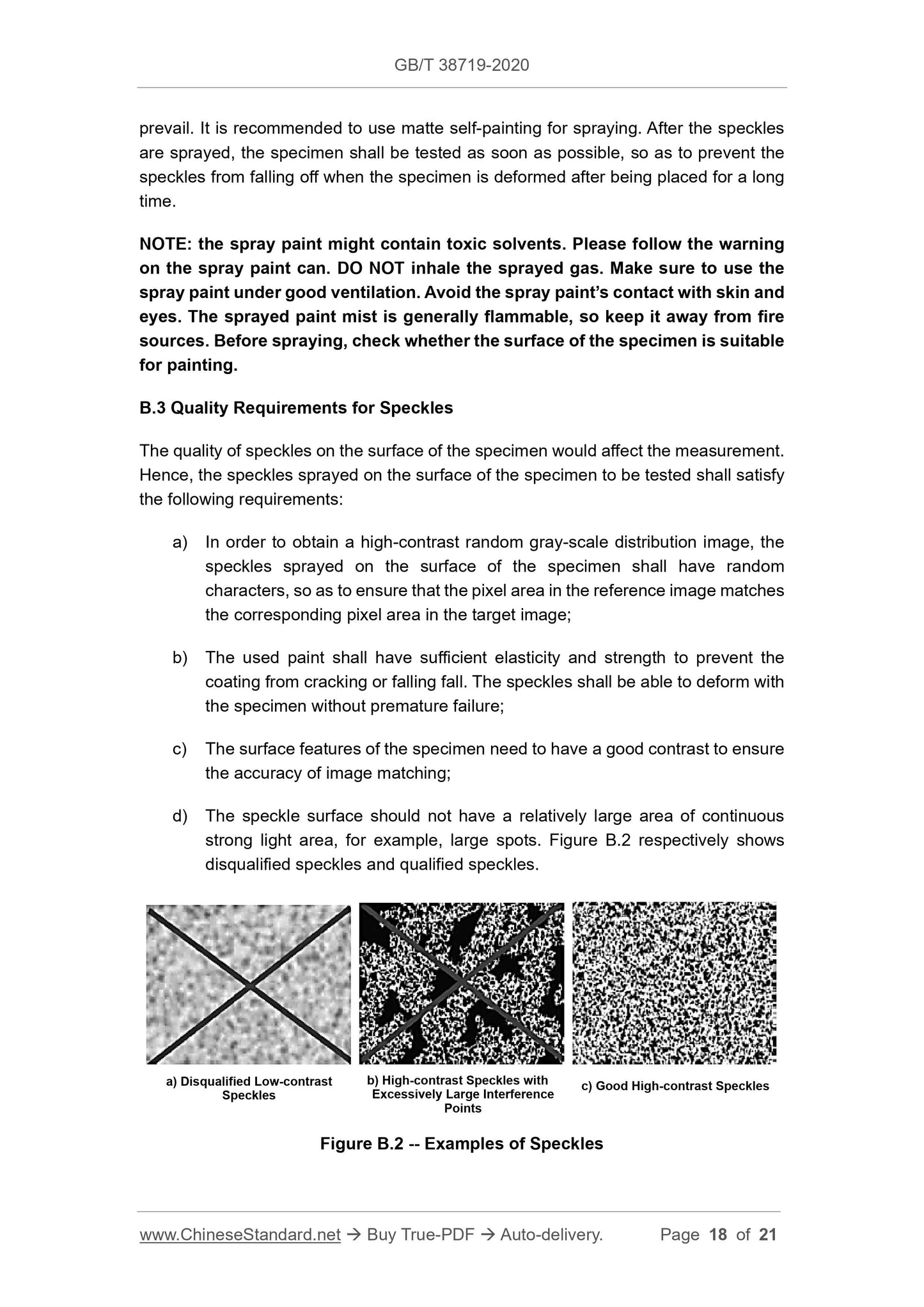1
/
of
7
www.ChineseStandard.us -- Field Test Asia Pte. Ltd.
GB/T 38719-2020 English PDF (GB/T38719-2020)
GB/T 38719-2020 English PDF (GB/T38719-2020)
Regular price
$265.00
Regular price
Sale price
$265.00
Unit price
/
per
Shipping calculated at checkout.
Couldn't load pickup availability
GB/T 38719-2020: Metallic Materials - Tube - Determination of Biaxial Stress-strain Curve of Tube by Hydro-bulging Test
Delivery: 9 seconds. Download (and Email) true-PDF + Invoice.Get Quotation: Click GB/T 38719-2020 (Self-service in 1-minute)
Newer / historical versions: GB/T 38719-2020
Preview True-PDF
Scope
This Standard specifies the terms and definitions, symbols and descriptions, testprinciples, equipment, specimens, test procedures, calculation of biaxial stress-strain
curves and test reports of the biaxial stress-strain curve hydro-bulging test for metallic
material tubes.
This Standard is applicable to thin-walled metal tubes with a circular section (including
seamless tubes and welded tubes) whose wall thickness is not less than 0.5 mm and
diameter-to-thickness ratio is greater than 20.
Basic Data
| Standard ID | GB/T 38719-2020 (GB/T38719-2020) |
| Description (Translated English) | Metallic Materials - Tube - Determination of Biaxial Stress-strain Curve of Tube by Hydro-bulging Test |
| Sector / Industry | National Standard (Recommended) |
| Classification of Chinese Standard | H22 |
| Classification of International Standard | 77.040.10 |
| Word Count Estimation | 16,198 |
| Date of Issue | 2020-03-31 |
| Date of Implementation | 2020-10-01 |
| Quoted Standard | GB/T 228.1; GB/T 15825.2 |
| Issuing agency(ies) | State Administration for Market Regulation, China National Standardization Administration |
| Summary | This standard specifies the terms and definitions, symbols and descriptions, test principles, equipment, specimens, test procedures, calculation of biaxial stress-strain curves and test reports for the biaxial stress-strain curve hydraulic bulging test of metal pipes. This standard applies to circular section thin-walled metal pipes (including seamless pipes and welded pipes) with a wall thickness of not less than 0.5 mm and a diameter-to-thickness ratio (ratio of outer diameter to wall thickness) greater than 20. |
Share
